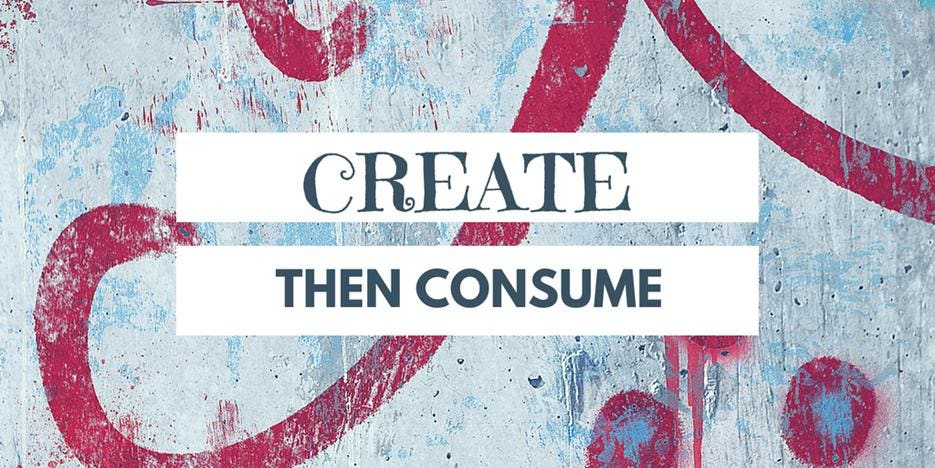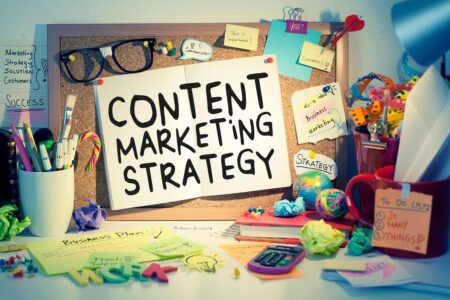Despite our desire to be more productive, Americans spend an average of seven hours a day consuming online content—and that number’s still climbing. Between emails, social feeds, podcasts, and newsletters, we’re constantly plugged in, absorbing information at every turn.
But here’s the problem: All that input may quietly crowd out output. And nowhere is that more evident than in our mornings.
If you’re a founder, solopreneur, marketer, or creator, your most valuable asset isn’t your content calendar or your email list. It’s your creative energy. And if you spend your first hour of the day consuming—scrolling, reading, reacting—you’re using that energy on someone else’s priorities before touching your own.
That’s why one small habit shift can make a massive difference—something I first heard from author and entrepreneur Marie Forleo: Create first. Then consume.
Why ‘create first’ works to help you be more productive
When you start your day in creation mode, you shift your energy from reactive to proactive. You build something that didn’t exist before—before the meetings, before the client asks, before the world gets noisy.
This practice works because it:
- Helps you build momentum and make progress early in the day.
- Preserves your best brainpower for the hard work to come.
- Compounds the benefit of creativity through daily consistency.
It’s really about who owns your time. When you consume first, the content creators whose work you’re consuming own your time. When you create first, you own your time, your message, and your mindset—before anyone else has a chance to rent space in your head.
What happens to your desire to be more productive when you consume first
If you’re anything like I used to be, your mornings at work might go something like this. First, you open your laptop and check your email. That’s a good 10 to 30 minutes of consumption right there. Then, you glance at your phone. A few taps later, and you’ve read three articles, saved two more for later, and responded to a few comments on LinkedIn. By the time you’re ready to start creating something—anything—you’re mentally scattered, looking at the clock, and feeling low-key overwhelmed.
Sound familiar?
Consuming first leads to:
- Mental fatigue before you even begin the real work.
- Unintentional comparisons with other creators and businesses.
- Reactive mode—responding instead of originating.
- A false sense of productivity that leaves your to-do list untouched.
The irony? You probably consumed content meant to inspire you to create… but never got around to it.
How to be more productive by creating first—even on busy days
You don’t need hours of uninterrupted solitude to make this work. Just 15 or 20 focused minutes can shift your entire day.
Start by defining what creating means for you. It might be:
- Writing 250 words for your next blog post or newsletter.
- Drafting a social post or podcast outline.
- Recording a quick voice memo with a new idea.
- Sketching out bullet points for a client proposal or campaign.
- Journaling, especially if you’re stuck or struggling.
If you’d like to give it a try, here’s how to make it easy to begin the new practice.
- Prep a starting point the night before—maybe you’ll work on a headline, an idea, a prompt. Or maybe you’ll open your journal.
- Silence notifications when you first sit down. If you must, put your phone out of reach.
- Set a timer—but don’t overthink it. Even 15 to 20 minutes will work.
The goal is momentum, not perfection.
Final thoughts on being more productive
Look, you already create for clients, customers, and your community. But what could change if you created something for yourself first—every morning? Before email. Before Instagram. Before the news cycle. Just you, your ideas, and a few blessed, uninterrupted minutes.
Your audience doesn’t need more content. They need more of your content.
So tomorrow morning, try it. Create something—anything—before you consume a single thing. You might be surprised at how you can be more productive and accomplish your goals when start the day on your own terms.
Read the full article here











